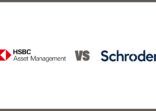Each month we feature the allocation in one of the three portfolios offered by FE Advisory Asia: cautious, balanced and growth. Data is included to show how well the portfolio has done compared to the previous month and year-to-date so that readers can get a sense of performance.
Additionally, Luke Ng, senior VP of research at FE Advisory Asia, provides a concise analysis on macro events and their potential impact on the portfolio.
A breakdown of the growth portfolio at the end of May 2017. Performance figures are in the menu image above.

Source: FE Advisory Asia
Portfolio breakdown and holdings are based on latest published data for each constituent, which may have publication dates that differ.
Percentages are based on current holdings and should only be used as a guide. Some information is provided to FE from independent third parties whom FE does not control. FE cannot guarantee the accuracy or reliability of the data, or its suitability for use by all investors.

|
How did the market perform in May?
Global equities remained positive in May amid encouraging economic data, with political events continuing to impact equity markets across each region. The US saw improving macroeconomic data as well as an upgrade in first quarter growth to 1.2% from 0.7% to help translate this into a modest increase for markets. This was capped slightly by increasing political uncertainty with Trump firing the director of the FBI and news that the FBI would be investigating Russia’s role in the Trump campaign.
European markets proved particularly robust as Q1 GDP growth of 0.5% matched analysts’ expectations whilst PMI figures hit a six-year high. In addition, the win for Emmanuel Macron in the French presidential election helped dampen lingering political uncertainty in the region. This result helped strengthen both European equities and the euro during the month. UK equities on the other hand were boosted by a weakened pound. The currency struggled slightly amid polls showing a narrowing lead for the Conservatives over Labour in the June election.
Overall, emerging markets outperformed developed markets once again. Korea was the top performer among major emerging nations as exporters benefited from resilient global growth and easing of political uncertainty following Moon Jae-in’s victory in the presidential election.
Most fixed income instruments also posted positive returns in the month, despite riskier assets generally performing better than safehaven assets.
How did the growth portfolio perform?
Our growth portfolio gained 2.81% in May, and 9.42% for the year to the end of May in US dollar terms. It outperformed both the MSCI World and Bloomberg Barclays Global Aggregate indices in the month, which grew 2.21% and 1.55% respectively.
Key positive contributors included our allocation to Korea. We acquired the exposure through the Invesco Korean Equity Fund, which gained 9.37% in the month. Our position with the JP Morgan Japan (Yen) Fund also had a strong run and significantly outperformed its respective market. For diversification purposes, we have maintained some sector equity exposure for the growth portfolio in European property and natural resources.
European property had a strong run alongside European equities and the euro. However, natural resources weighed on the portfolio as commodity prices remained weak over the month.
How did we rebalance the growth portfolio?
With strong global growth and less political uncertainty in Europe, we have taken the decision to dial up our risk budget toward the upper end of our target range.
This has been done by trimming our fixed income exposure in the Fidelity US Dollar Bond Fund, and initiating a new position in a European equity fund which favors high-quality companies. We have also decided to take profit from our Korean equity exposure, and increased our weighting in China through a dividend-focused strategy. It is a move designed to seize the dividend growth opportunities emerging in China.
While we continue to value the diversification benefits offered by our sector equity holdings, we have decided to trim these exposures and replace them with global property and energy equities. The former offers broader exposure in the property sector and the latter serves to capture the upside potential from energy stocks, which posted better-than-expected earnings but has so far failed to catch up with the broader equity rally due to the softening of energy prices.

FE Advisory Asia 2017 portfolio results
| Jan | Feb | Mar | Q1 | Apr | May | |
| Cautious | 0.78% | 1.28% | 0.77% | 2.85% | 0.71% | 1.05% |
| Balanced | 2.03% | 0.78% | 0.19% | 3.03% | 1.23% | 1.85% |
| Growth | 2.57% | 2.00% | 0.53% | 5.17% | 1.19% | 2.81% |
Source: FE Advisory Asia. Growth rates in US dollar terms.
FE Advisory Asia has designed the portfolios to target specific risk levels of cautious, with a target annualised portfolio volatility of 4%, balanced (7%) and growth (10%). They are rebalanced twice per year, typically in May and December.
The portfolios are managed using a proprietary optimisation system with strategic asset allocation insights from AKG to complement the shorter-term tactical asset allocation decisions made by FE’s research team.
The portfolios typically comprise eight funds chosen from the FE Advisory top 100 list of funds spanning all asset classes and sectors from the Hong Kong SFC-authorised fund universe.
















